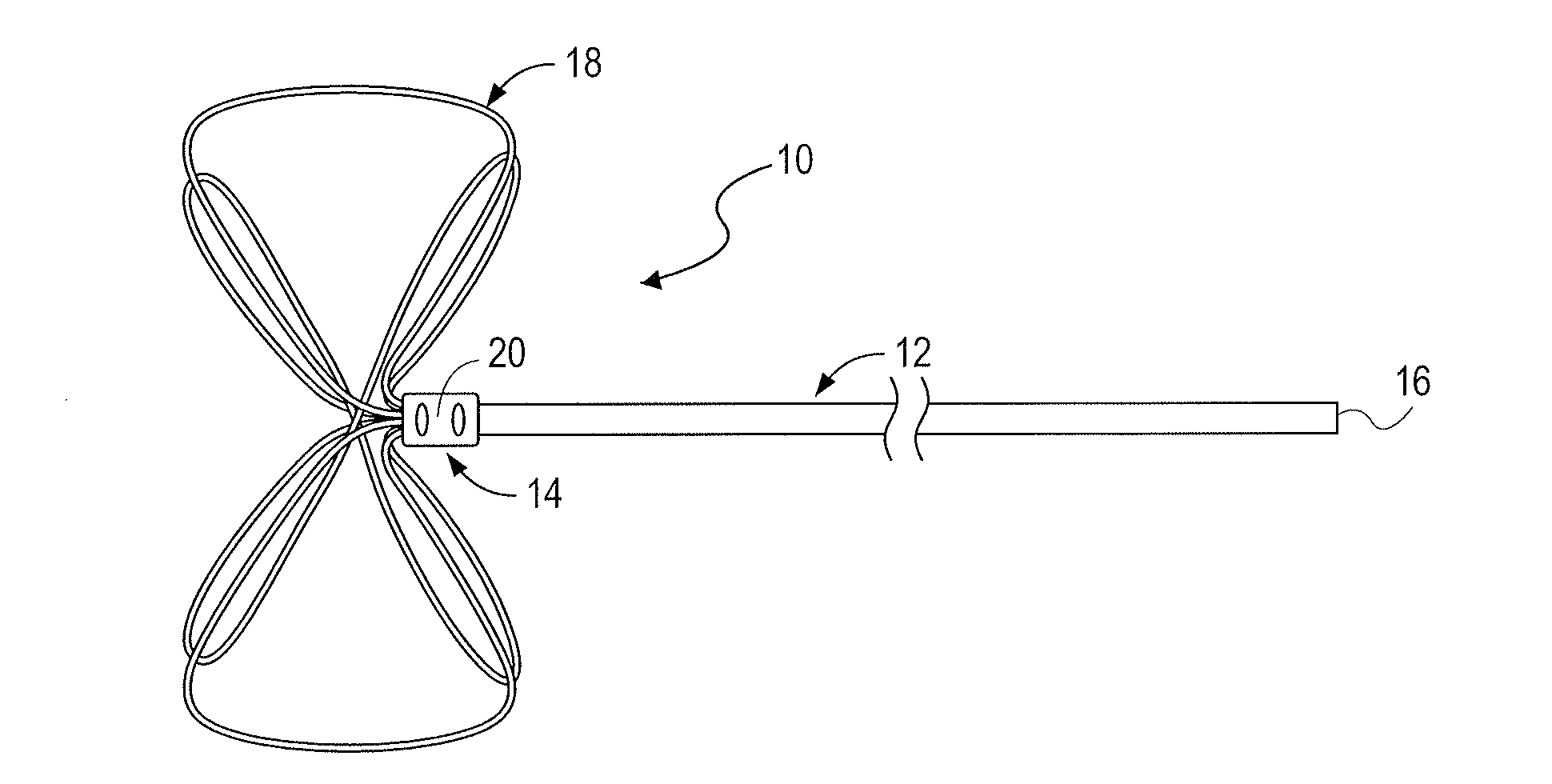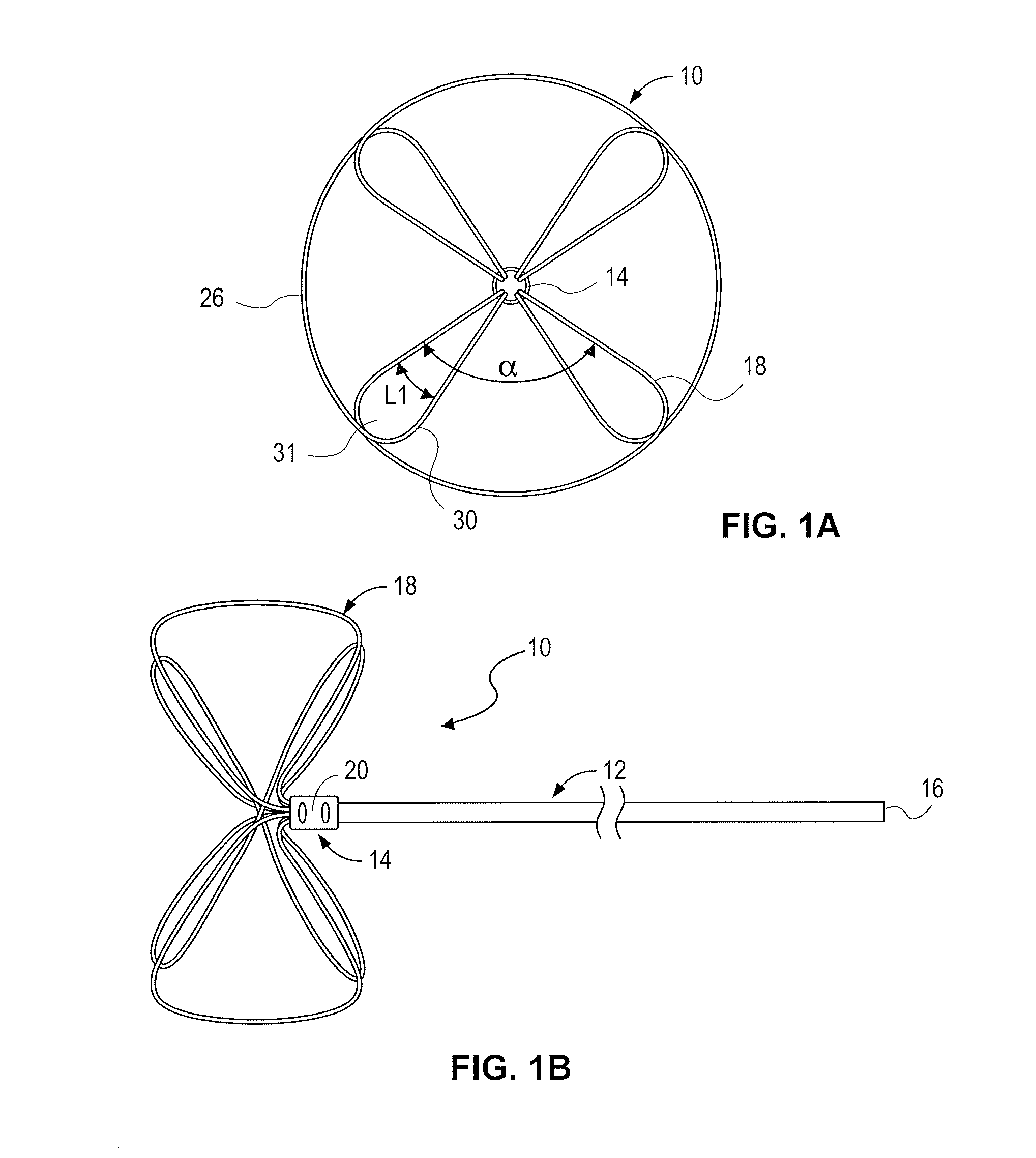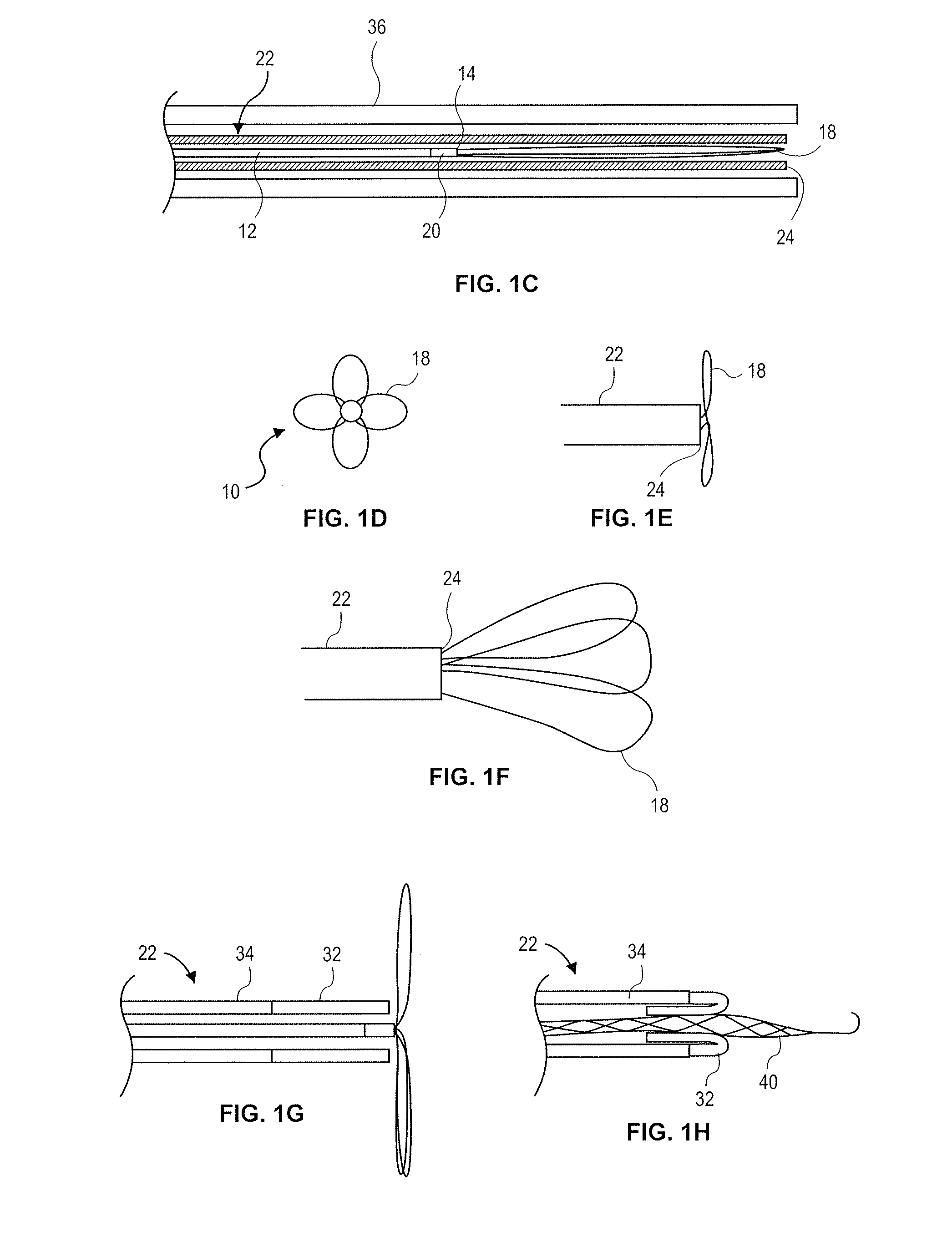Retrieval snare device and method
a snare and retrieval technology, applied in the field of retrieval snare devices and methods, can solve problems such as the potentially fatal condition known as pulmonary embolism (pe)
- Summary
- Abstract
- Description
- Claims
- Application Information
AI Technical Summary
Benefits of technology
Problems solved by technology
Method used
Image
Examples
Embodiment Construction
[0109]As illustrated in FIGS. 1A and 1B, an embodiment of a retrieval device 10, such as a snare, includes a primary or main shaft 12, having a distal end 14 and a proximal end 16. At the distal end 14 of the shaft 12 is a plurality of loop elements 18. In some embodiments, the device 10 can typically have at least two loop elements 18, but can have three or more loop elements 18. These loop elements 18 are attached proximally to the distal end 14 of the shaft 12 via a hypo tube component 20, and can be free and independent at their distal-most ends. In other embodiments, the distal ends of the loop elements 18 can be fastened or connected to adjacent loop elements using, for example, loop connectors, as described in more detail below. The loops 18 can be of a polymeric or metallic material, and are typically radiopaque and flexible.
[0110]The loop elements 18 can have a region of overlap 31, with a span L1, between the adjacent loop elements. In some embodiments, L1 can be less than...
PUM
 Login to View More
Login to View More Abstract
Description
Claims
Application Information
 Login to View More
Login to View More - R&D
- Intellectual Property
- Life Sciences
- Materials
- Tech Scout
- Unparalleled Data Quality
- Higher Quality Content
- 60% Fewer Hallucinations
Browse by: Latest US Patents, China's latest patents, Technical Efficacy Thesaurus, Application Domain, Technology Topic, Popular Technical Reports.
© 2025 PatSnap. All rights reserved.Legal|Privacy policy|Modern Slavery Act Transparency Statement|Sitemap|About US| Contact US: help@patsnap.com



